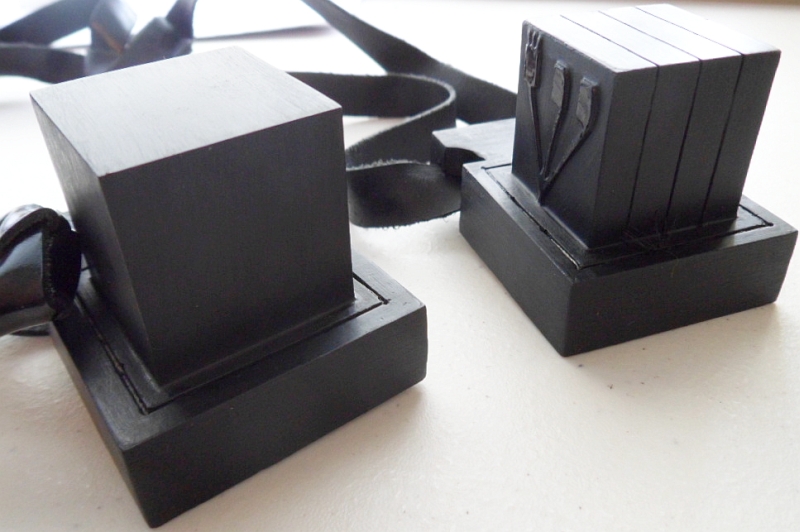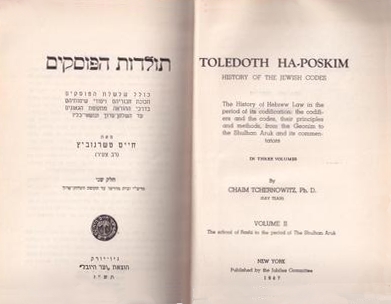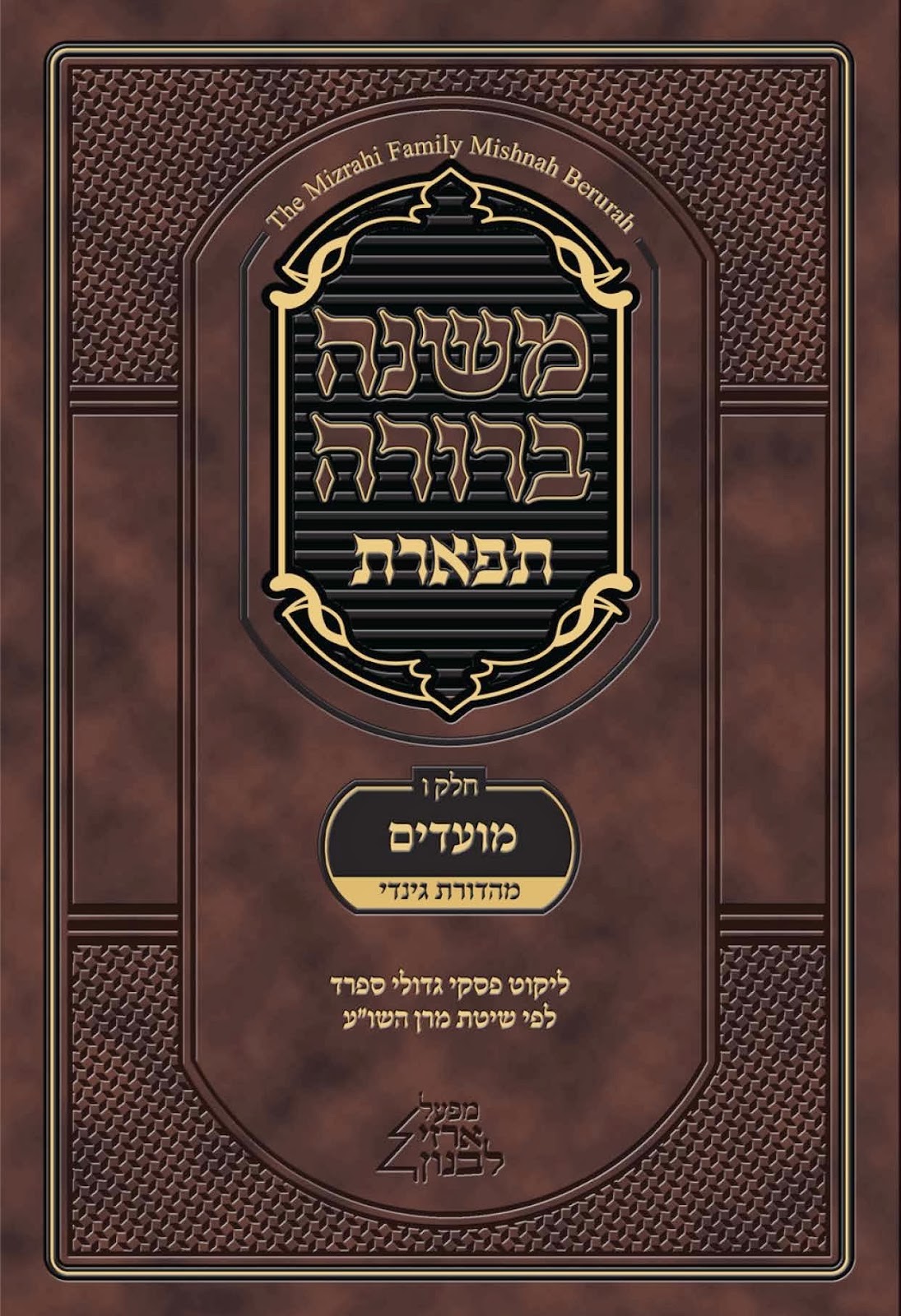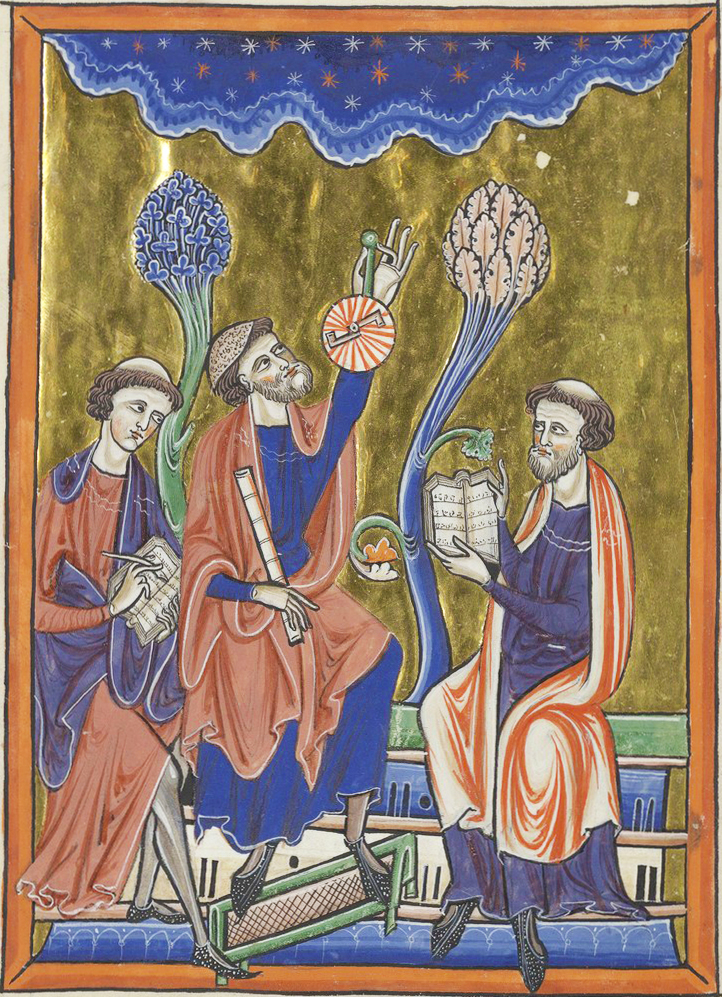|
Yaakov Chaim Sofer
Yaakov Chaim Sofer (; 1870-1939) was a Sephardic rabbi, kabbalist, talmudist and poseq. He is the author of ''Kaf Hakhaim'', a work of halakha. Biography Sofer was born in Baghdad, Ottoman Iraq. He studied the Torah under Abdallah Somekh and the Yosef Hayyim. In 1904, he journeyed to the Ottoman Palestine together with colleagues Sadqa Hussein and the Asei HaYa'ar to meet with the Hakham Bashi, Yaakov Shaul Elyashar, and to pray at the graves of the righteous.Bar Osher, Avishai''Biography of Rabbi Yosef Ḥayyim, the Ben Ish Hai'' pg. 6, Hebrew; ''cms.edu.gov.il'' After visiting Jerusalem, he decided to settle there permanently. He studied in the yeshiva of Beit El Synagogue in the Old City of Jerusalem, well known for the study of kabbalah. In 1909, he moved to the newly founded ''Shoshanim leDavid'' yeshiva. It was here that he composed his works. Sofer authored several works of halakha and ''aggadah''. His books are known for discussing the original traditions of Iraqi ... [...More Info...] [...Related Items...] OR: [Wikipedia] [Google] [Baidu] |
Chaim Sofer
Chaim Sofer (also known as the Machne Chaim, the name of his Responsa#In Judaism, responsa) (September 29, 1821 – June 28, 1886) was a renowned Hungarian rabbi and "scholarly spokesperson for Orthodox Judaism during his time." Biography Chaim Sofer was born in Pressburg, Hungary (now Bratislava, Slovakia), on September 29, 1821. His father was Mordechai Efraim Fischel. Sofer attended the famous ''yeshiva'' of Rabbi Moses Sofer (no relation) in Pressburg, and was considered his "most distinguished student". He also attended the ''yeshiva'' of Rabbi Meir Eisenstaedter in Ungvar, Hungary (now Uzhhorod, Ukraine). In 1844, aged 23, he was hired to teach high-school students in a ''yeshiva'' in Mattersdorf, Hungary (now Mattersburg, Austria). He subsequently served as the rabbi of the Orthodox Jewish communities in Gyömöre, Hungary (1852) Sajószentpéter, Hungary (1859), and Munkacs, Hungary (now Mukachevo, Ukraine (1868). While he was Chief Rabbi in Munkacs, Sofer was against int ... [...More Info...] [...Related Items...] OR: [Wikipedia] [Google] [Baidu] |
Beit El Synagogue
The Beit El Kabbalist yeshiva (Beit El means "House of God") (also: ''Midrash Hasidim'' 'School of the Devout' or ''Yeshivat haMekubalim'', 'Yeshiva of the Kabbalists') is a center of Kabbalah, kabbalistic study in Jerusalem. It consists of two buildings, one in the Mekor Baruch, Ruhama neighbourhood of West Jerusalem, built in 1948, and another in Old City (Jerusalem), Old City’s Jewish Quarter, Jerusalem, Jewish Quarter, built in 1974. History The yeshiva was founded in 1737 by Rabbi Gedaliah Hayon, originally from Constantinople, for the study of kabbalah in the Holy City. In the 1740s, a gifted young man named Shalom Sharabi, Shalom Mizrachi Sharabi arrived in Jerusalem from Yemen. He studied at Beit El and over time became an outstanding scholar and kabbalist. At the behest of Rabbi Hayon, he was appointed head of the yeshiva. Under Sharabi’s leadership the yeshiva grew and became one of the main yeshivas in Jerusalem with 40 scholars from the Sephardic and Ashkenaz ... [...More Info...] [...Related Items...] OR: [Wikipedia] [Google] [Baidu] |
Mezuzah
A ''mezuzah'' ( "doorpost"; plural: ''mezuzot'') is a piece of parchment inscribed with specific Hebrew language, Hebrew verses from the Torah, which Jews affix in a small case to the doorposts of their homes. These verses are the Biblical passages in which the use of a mezuzah is commanded ( and ); they also form part of the Shema Yisrael, Shema prayer. According to Halakha, traditional Jewish law, a ''mezuzah'' must be placed on every Post and lintel, post-and-lintel entrance to a residence, courtyard, or city. Since the time of Meir of Rothenburg (), religious Jews have increasingly also placed ''mezuzot'' on the entrances to non-residential buildings such as synagogues and offices, and on each internal doorway of the home or building, with the exception of bathrooms (where the Names of God, name of God is forbidden) and small closets. The ''klaf'' is prepared by a qualified scribe ("''sofer stam'') who has undergone training, both in studying the relevant religious laws, ... [...More Info...] [...Related Items...] OR: [Wikipedia] [Google] [Baidu] |
Tefillin
Tefillin (Modern Hebrew language, Israeli Hebrew: / ; Ashkenazim, Ashkenazic pronunciation: ; Modern Israeli Hebrew, Modern Hebrew pronunciation: ), or phylacteries, are a set of small black leather boxes with leather straps containing scrolls of parchment inscribed with verses from the Torah. Tefillin are worn by male adult Jews during weekday and Sunday morning prayers. In Orthodox Judaism, Orthodox and traditional communities, they are worn solely by men, while some Reform Judaism, Reform and Conservative Judaism, Conservative (Masorti) communities allow them to be worn by Jewish adults regardless of gender. In Jewish law (halacha), women are exempt from most time-dependent positive commandments, which include tefillin, and unlike other time-dependent positive commandments, most halachic authorities prohibit them from fulfilling this commandment. Although "tefillin" is technically the plural form (the singular being "tefillah"), it is often used as a singular as well. The a ... [...More Info...] [...Related Items...] OR: [Wikipedia] [Google] [Baidu] |
Torah Scroll
A Sephardic Torah scroll rolled to the first paragraph of the Shema An Ashkenazi Torah scroll rolled to the Decalogue file:Keneseth Eliyahoo Synagogue, Interior, Tora Cases.jpg">Torah cases at Knesset Eliyahoo Synagogue, Mumbai, India A Torah scroll (, , lit. "Book of Torah"; plural: ) is a manuscript">handwritten copy of the Torah, meaning the five books of Moses">Torah.html" ;"title="manuscript">handwritten copy of the Torah">manuscript">handwritten copy of the Torah, meaning the five books of Moses (the first books of the Hebrew Bible). The Torah scroll is mainly used in the ritual of Torah reading during Jewish prayers. At other times, it is stored in the holiest spot within a synagogue, the Torah ark, which is usually an ornate curtained-off cabinet or section of the synagogue built along the wall that most closely faces Jerusalem, the direction Jews face when praying. The text of the Torah is also commonly printed and bound in book form for non-ritual fu ... [...More Info...] [...Related Items...] OR: [Wikipedia] [Google] [Baidu] |
Posek
In Jewish law, a ''posek'' ( , pl. ''poskim'', ) is a legal scholar who determines the application of ''halakha'', the Jewish religious laws derived from the written and Oral Torah, in cases of Jewish law where previous authorities are inconclusive, or in those situations where no clear ''halakhic'' precedent exists. The decision of a posek is known as a ''psak halakha'' ("ruling of law"; pl. ''piskei halakha'') or simply a "psak". ''Piskei halakha'' are generally recorded in the responsa literature. Orthodox Judaism Poskim play an integral role in Orthodox Judaism. * Generally, each community will regard one of its ''poskim'' as its ''Posek HaDor'' ("posek of the present generation"). * Most rely on the rav in their community (in Hasidic communities, sometimes the rebbe) or the leading posek. Poskim will generally not overrule a specific law unless based on an earlier authority: a posek will generally extend a law to new situations but will not change the Halakhah. ... [...More Info...] [...Related Items...] OR: [Wikipedia] [Google] [Baidu] |
Isaac Luria
Isaac ben Solomon Ashkenazi Luria (; #FINE_2003, Fine 2003, p24/ref>July 25, 1572), commonly known in Jewish religious circles as Ha'ari, Ha'ari Hakadosh or Arizal, was a leading rabbi and Jewish mysticism, Jewish mystic in the community of Safed in the Galilee region of Ottoman Syria, now Israel. He is considered the father of contemporary Kabbalah, his teachings being referred to as Lurianic Kabbalah. While his direct literary contribution to the Kabbalistic school of Safed was extremely minute (he wrote only a few poems), his spiritual fame led to their veneration and the acceptance of his authority. The works of his disciples compiled his oral teachings into writing. Every custom of Luria was scrutinized, and many were accepted, even against previous practice. Luria died at Safed on July 25, 1572, and is buried at the Safed Old Jewish Cemetery. The Ari Ashkenazi Synagogue, also located in Safed, was built in memory of Luria during the late 16th century. Early life Luri ... [...More Info...] [...Related Items...] OR: [Wikipedia] [Google] [Baidu] |
Mishnah Berurah
The ''Mishnah Berurah'' ( "Clear Teaching") is a work of ''halakha'' (Jewish law) by Rabbi Yisrael Meir Kagan (Poland, 1838–1933, also known as ''Chofetz Chaim''). It is a commentary on ''Orach Chayim'', the first section of the ''Shulchan Aruch'' which deals with laws of prayer, synagogue, Shabbat and holidays, summarizing the opinions of the ''Acharonim'' (post-Medieval rabbinic authorities) on that work. The title comes from Talmud Bavli Masechet Shabbat 138b-139a, "They will rove, seeking the word of the LORD, but they will not find it ( Amos 8:12) -- they will not find clear teaching and clear law in one place." Contents The ''Mishnah Berurah'' is traditionally printed in 6 volumes alongside selected other commentaries. The work provides simple and contemporary explanatory remarks and citations to daily aspects of ''halakha''. It is widely used as a reference and has mostly supplanted the Chayei Adam and the Aruch HaShulchan as the primary authority on Jewish daily li ... [...More Info...] [...Related Items...] OR: [Wikipedia] [Google] [Baidu] |
Yoreh De'ah
''Yoreh De'ah'' () is a section of Rabbi Jacob ben Asher's compilation of halakha (Jewish law), the ''Arba'ah Turim'', written around 1300. This section treats all aspects of Jewish law not pertinent to the Hebrew calendar, finance, torts, marriage, divorce, or sexual conduct. (Nevertheless there exists occasional overlap other areas). ''Yoreh De'ah'' is therefore the most diversified area of Jewish law; see aside. Later, Rabbi Yosef Karo modeled the framework of his own compilation of practical Jewish law, the Shulchan Aruch, after the ''Arba'ah Turim.'' Many later commentators used this framework, as well. Thus, ''Yoreh De'ah'' in common usage may refer to the latter work. Ben Asher's ''Yoreh De'ah'' was also a key source for ''Ha-Agur'' (The Collection) by Jacob ben Judah Landau. See also *613 mitzvot *The other three sections of Arba'ah Turim and other works borrowing its organizational scheme are: **Orach Chayim **Choshen Mishpat **Even HaEzer References Rabb ... [...More Info...] [...Related Items...] OR: [Wikipedia] [Google] [Baidu] |
Orach Chayim
''Orach Chayim'' ("manner/way of life") is a section of Rabbi Jacob ben Asher's compilation of Halakha (Jewish law), '' Arba'ah Turim''. This section addresses aspects of Jewish law pertinent to the Hebrew calendar (be it the daily, weekly, monthly, or annual calendar). Rabbi Yosef Karo modeled the framework of the '' Shulkhan Arukh'' (שולחן ערוך), his own compilation of practical Jewish law, after the ''Arba'ah Turim.'' Many later commentators used this framework, as well. Thus, ''Orach Chayim'' in common usage may refer to another area of halakha, separate from Rabbi Jacob ben Asher's compilation. ''Orach Chayim'' deals with but is not limited to: *Washing the hands in the morning * Tefillin * Tzitzit (ritual fringes) *Prayer * Sabbath * Festivals * Torah reading in synagogue. Commentaries on the ''Shulchan Aruch'' – ''Orach Chayim'' * ''Taz (Turei Zohov)'' – by Rabbi David HaLevi Segal * ''Magen Avraham'' – by Rabbi Avraham Gombiner * ''Biur HaGra'' – ... [...More Info...] [...Related Items...] OR: [Wikipedia] [Google] [Baidu] |
Acharonim
In Halakha, Jewish law and history, ''Acharonim'' (, , ; ; ) are the leading rabbis and Posek, poskim (Jewish legal decisors) living from roughly the 16th century to the present, and more specifically since the writing of the ''Shulchan Aruch'' (; a code of Jewish law) in 1563 CE. The ''Acharonim'' follow the ''Rishonim'', the "first ones"—the rabbinic scholars between the 11th and the 16th century following the ''Geonim'' and preceding the ''Shulchan Aruch''. The publication of the ''Shulchan Aruch'' thus marks the transition from the era of Rishonim to that of Acharonim. The Acharonim are thus contemporary with the Early Modern Period, the foundation of Hasidic Judaism, Jewish emancipation in Europe, the Haskalah (Jewish Enlightenment), Zionism, the Holocaust, the foundation of the Israel, State of Israel and the Jewish exodus from the Muslim world. Consequences for Halakhic change The distinction between the ''Acharonim'', ''Rishonim'' and ''Geonim'' is meaningful histo ... [...More Info...] [...Related Items...] OR: [Wikipedia] [Google] [Baidu] |
Rishonim
''Rishonim'' (; ; sing. , ''Rishon'') were the leading rabbis and ''posek, poskim'' who lived approximately during the 11th to 15th centuries, in the era before the writing of the ''Shulchan Aruch'' (, "Set Table", a common printed code of Jewish law, 1563 CE) and following the ''Geonim'' (589–1038 CE). Rabbinic scholars subsequent to the ''Shulchan Aruch'' are generally known as ''acharonim'' ("the latter ones"). The distinction between the and the is meaningful historically; in ''halakha'' (Jewish law) the distinction is less important. According to a widely held view in Orthodox Judaism, the Acharonim generally cannot dispute the rulings of rabbis of previous eras unless they find support from other rabbis in previous eras. On the other hand, this view is not formally a part of ''halakha'' itself, and according to some rabbis is a violation of the halakhic system.See Kesef Mishna (Maamrim 2:2), Kovetz Igros Chazon Ish (2:26) In ''The Principles of Jewish Law'', Orthodox ra ... [...More Info...] [...Related Items...] OR: [Wikipedia] [Google] [Baidu] |









